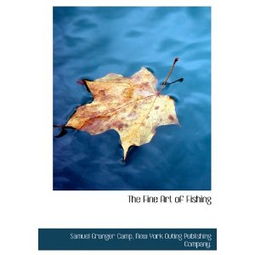Content:
In the harsh reality of a world where hunger looms over the horizon, the starving fishman emerges as a savior, braving the treacherous waters to provide sustenance for his fellow villagers. As a fisherman himself, I have compiled a comprehensive guide on the art of fishing, specifically tailored for the starving fishman. From selecting the right equipment to mastering the fishing techniques, this article will equip you with the essential skills to become a proficient angler.
Choosing the Right Equipment
The first step in mastering the art of fishing is to ensure you have the appropriate equipment. Here are some essential items you should consider:
a. Rod and Reel: A high-quality rod and reel combination is crucial for success. Choose a rod that is lightweight and durable, with a suitable length for the type of fish you are targeting. The reel should be smooth, reliable, and capable of handling the weight of the fish you expect to catch.
b. Line: The type of line you use depends on the fish you are targeting and the conditions of the water. Monofilament, fluorocarbon, and braided lines are commonly used, each with its own advantages. Monofilament is flexible and forgiving, fluorocarbon is nearly invisible underwater, and braided line is strong and has minimal stretch.
c. Lures and Bait: The choice of lure or bait depends on the fish species and the conditions. Live bait, such as worms, crickets, or minnows, can be highly effective, while artificial lures like spinners, spoons, and jigs can attract fish with their movement and vibration.
Learning the Basics of Casting
Casting is a fundamental skill that every fisherman must master. Here are some tips to help you improve your casting technique:
a. Hold the rod correctly: Grip the rod with your dominant hand, placing your index finger on the reel's handle and your thumb on the rod's grip. The remaining fingers should wrap around the rod.
b. Position your feet: Stand with your feet shoulder-width apart, and position your feet perpendicular to the direction of your cast. This stance provides stability and balance.
c. Practice your backcast: Begin by lifting the rod and bringing it back behind you. As you do this, wind up your wrist and arm, storing energy in the rod.

d. Unwind and accelerate: Once you have reached the desired backcast length, unwind the line by rotating the reel handle. As the line leaves the spool, accelerate your wrist and arm, propelling the lure or bait forward.
Mastering the Art of Bait Fishing
Bait fishing is a popular method for catching a variety of fish species. Here are some tips to help you succeed:
a. Select the right bait: Choose a bait that is native to the area and known to attract the fish you are targeting. Live bait can be more effective, but artificial baits can also be used.
b. Present the bait properly: Depending on the fish species, you may need to vary your technique. For example, some fish may be attracted to a slow and steady presentation, while others may require a more erratic and aggressive approach.
c. Pay attention to detail: Be mindful of the bait's position in the water column and adjust your technique accordingly. Sometimes, a slight change in presentation can make a significant difference in the number of fish you catch.
Advanced Techniques for the Starving Fishman
As you become more proficient in fishing, you can experiment with advanced techniques to increase your chances of success:
a. Trolling: Trolling involves dragging a lure or bait behind a moving boat at a specific speed. This method can be effective for catching fish that are suspended in the water column.
b. Fly fishing: Fly fishing is a technique that involves casting a weighted fly line and a lure called a fly. This method is popular for catching trout and salmon.
c. Ice fishing: In colder climates, ice fishing can be a productive way to catch fish through the winter months. Use specialized equipment and techniques to target fish that are huddled in deeper water.
Conclusion
In the face of a world threatened by hunger, the starving fishman plays a crucial role in providing sustenance for his community. By mastering the art of fishing, you can become a proficient angler and ensure a steady supply of food for your fellow villagers. Remember to choose the right equipment, learn the basics of casting, and experiment with advanced techniques to increase your chances of success. With dedication and practice, you will become a skilled fisherman, helping to nourish those in need.












